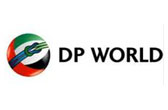
Department of Homeland Security officials disclosed yesterday that the manufacturer of a security device for detecting door breaches on shipping containers has reduced the false positive alarm rate below the 1 percent threshold required by the U.S. government for its "smart box" program, but other technical difficulties remain to be corrected.
Testing conducted last year by Johns Hopkins University's Applied Physics Laboratory for DHS's Customs and Border Protection division determined that nuisance alarms only occurred on three of 1,000 containers -- an error rate of 0.3 percent, said Randy Koch, general manager for GE Security, the maker of the container security device (CSD). That is a significant improvement from the 5 percent rate for false alarms the device experienced a year ago. Before GE Security began taking over the product in 2004 from Swedish vendor All Set Marine Security, error rates were as high as 40 percent, according to industry sources at the time.
The third party testing by CBP validates results GE officials previously reported from their own testing of shipments on GE's internal trade lanes.
"The big news is that the false positive rate has been fixed. We have a 99.7 percent success rate," Koch told Shippers NewsWire. "That's the most complex function of the CSD. That's the toughest part of the CSD to crack."
About a dozen major importers, who participated in the tests by letting CBP and GE outfit their shipments with the device, were briefed by DHS and GE officials on the results during a meeting at Johns Hopkins' Washington campus. The companies all belong to the Customs-Trade Partnership Against Terrorism, and have a vested interest in the results because CBP has made the development of a tamper-evident "smart box," a key component of its plan to create a no-inspection “green lane” for its trusted shippers who use the device and take other supply chain security measures.
But CBP and GE still aren't out of the woods. Koch said 4 percent of the containers devices had problems with their internal clocks used to place a time and date stamp on each electronic status message transmitted by the device.
The GE device magnetically attaches to the inside of the container and uses an electronic proximity sensor to detect and record when the door is opened. Fixed and handheld readers used at ports and other locations can pick up the short-range radio frequency signal with the identification number and status from the internal transmitter.
Koch said GE has identified software fixes for the clock drift and resetting problems, and plans to have corrections in place in time for CBP to run additional tests by March.
Another 1.7 percent of container security devices had various problems, such as arming and disarming the devices that will be corrected by manufacturing improvements when GE moves from the prototype stage to commercial grade manufacturing with rugged components, Koch said.
GE Security plans to commercially launch its CommerceGuard product this summer, Koch said. Earlier in the week the General Electric Co. subsidiary said German conglomerate Siemens will market and distribute its CommerceGuard device in Europe and other markets. Koch said customers are demanding the device for their own purposes ahead of any government standards for securing containers.
"We probably will not use it anytime soon. We have to see what is going to happen," said Sandra Fallgatter, a customs compliance manager for J.C. Penney, who attended the Smart Box briefing.
So far CBP has limited testing to the CommerceGuard product, but CBP officials indicated that their goal is to evaluate multiple devices, Fallgatter said.
"It sounded like they were not committing to the GE CommerceGuard program," she said.
CBP officials indicated they are considering giving a similar update on the smart box issue during the agency's C-TPAT seminar March 1-3 in Costa Mesa, Calif., Fallgatter said.
How smart is that?















